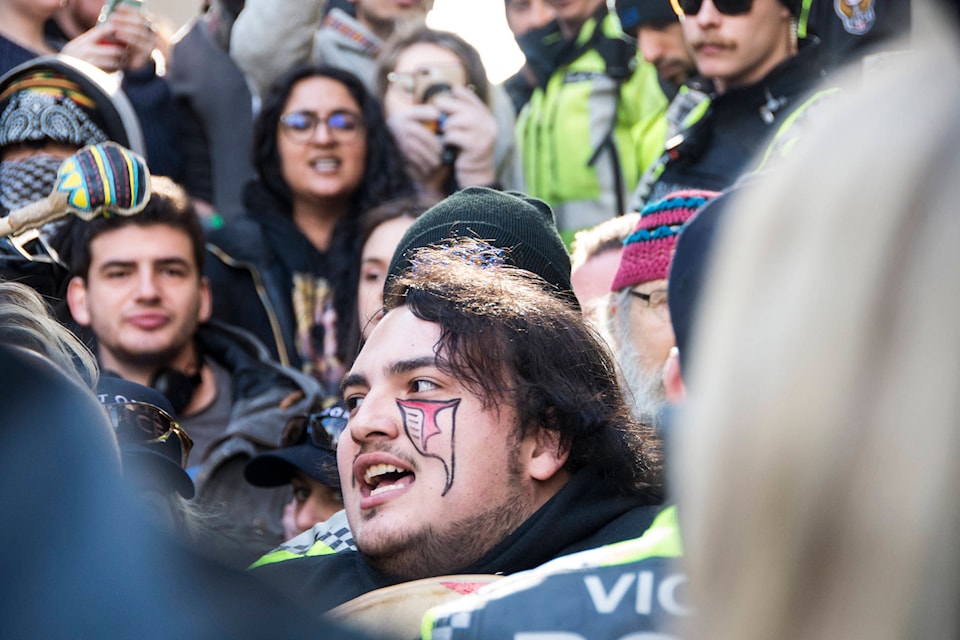As this column is written, ongoing protests in support of Wet’suwet’en hereditary chiefs continue.
So does inaction at all levels of government. Both Premier John Horgan and Prime Minister Justin Trudeau say they support the right to protest, seemingly unaware of the major damage these random protests cause people in their day-to-day lives.
Vancouver Mayor Kennedy Stewart, a former MP who was arrested at a protest in Burnaby over the Trans Mountain pipeline expansion, has done nothing to ensure traffic could keep moving on major roads and bridges in his city, leaving thousands of people unable to get to work or school or back home again.
Most of the heat is on Horgan. The Coastal GasLink pipeline is within provincial jurisdiction. It will move natural gas from northeastern B.C. to an LNG facility in Kitimat. The liquefied gas is to be shipped to China and other Asian countries, enabling them to reduce their dependence on coal-burning electricity plants.
The protesters attempted to shut down the B.C. Legislature entirely on Feb. 11, when the spring session was to begin. MLAs, staff members, members of the media and the public were kept out of the building, with protesters blocking every entrance. Some managed to get inside, and eventually the legislature sat, with Lieutenant-Governor Janet Austin reading the Speech from the Throne.
READ MORE: B.C. touts Indigenous reconciliation in protest-delayed throne speech
Horgan addressed the impact of the blockade the following day, making it clear his government would do nothing to stop protesters from disrupting activities, other than that of government itself.
The following day, he sent a letter to both Wet’suwet’en and Gitksan hereditary chiefs, who’d asked for a meeting. He promised Indigenous Relations Affairs Minister Scott Fraser would meet with them, if a blockade of the CN rail line near New Hazelton ended. That blockade has stopped all rail traffic to and from Prince Rupert.
Horgan missed the point – again. The chiefs want to meet with him. He turned them down once before. They value protocol.
How did this situation get so bad? The first reason is that few B.C. First Nations have treaties, and thus have laid claim to vast areas which they have traditionally used. The treaty process needs a drastic overhaul.
The second is related to the first. First Nations people have been treated badly for many generations – since the first Europeans showed up here in the 1700s. The attempt to eradicate their distinctive languages, culture and society through assimilation, disease, colonial power structures and other means, has been resisted. This has left First Nations and governments with huge misunderstandings. These have not been helped by a series of court rulings, some of which are in conflict. As Horgan said, “It is a process.”
Horgan, Trudeau and Stewart are in a situation that politicians hate to be in – no matter what they do, they will be roundly condemned.
The role played by social media in amplifying the protests cannot be ignored. As Bill Phillips of the Prince George Daily News puts it, “The social media machine behind the Wet’suwet’en is very modern, very savvy, and very effective. Without social media, the Wet’suwet’en blockade would likely be yet another drama unfolding in the sticks of northern B.C. somewhere that very few people knew about, much less pay attention to.”
Protesters have been emboldened. Disruptions will go on as long as government inaction continues.
Frank Bucholtz is a columnist and former editor with Black Press Media. Email him at frank.bucholtz@blackpress.ca
